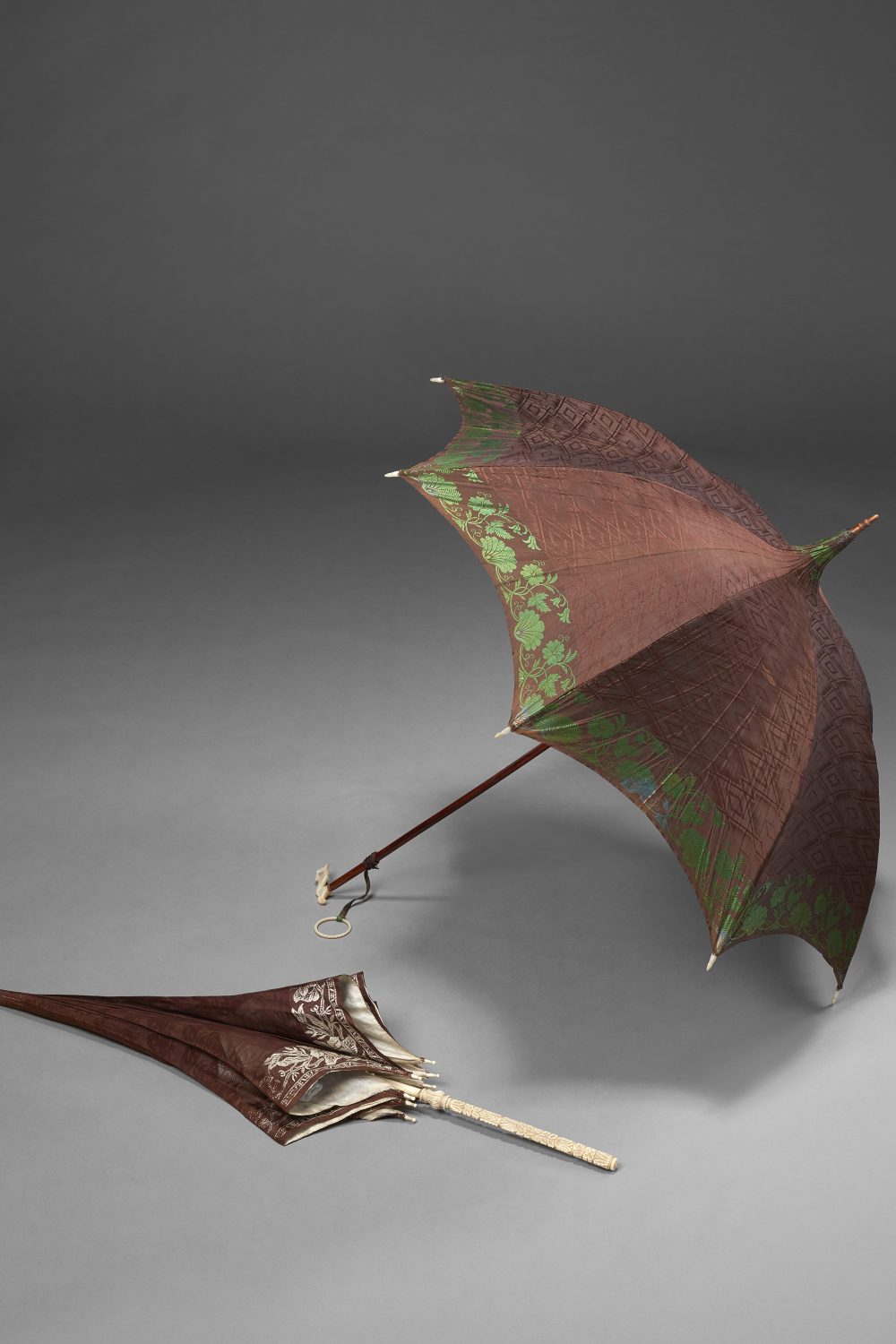Up until the 1930s when tanned skin became fashionable, parasols were essential accessories to protect the complexions of the leisured classes. Although functional, their size, shape, materials and decoration were subject to changes of fashion. These two examples, both the popular colour of brown, date from a period in which in technical advances and novelty features such as automatic opening were being developed and patented.
The parasol on the left of the image has a cover of translucent silk patterned with flowers and butterflies. Its ivory self-patterned lining is also translucent, suggesting that a certain amount of filtered light might have been considered flattering. In common with other parasols of the time its long handle of bone, an inferior substitute for ivory, has been carved with a symmetrical design of stylised flowers and foliage, its matching ferrule now missing. The parasol on the right of the image has an unlined cover of geometrically-patterned brown silk, that like its companion is woven with a border of contrasting flowers. Its stick and ribs are of practical wood and metal, while the handle, ring closure and rib tips are of carved mother of pearl.
